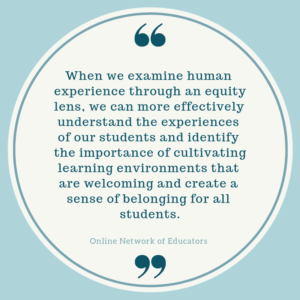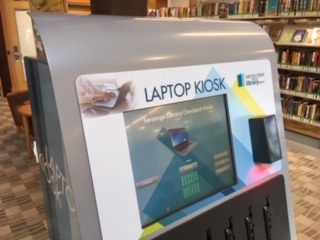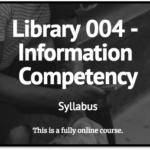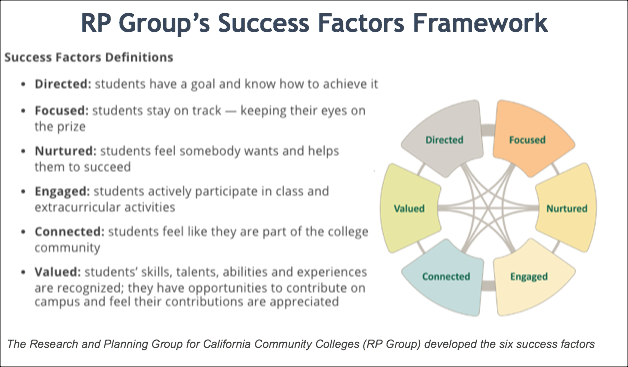“Students find purpose in their learning process when they can connect with the instructor, and when learning objectives and the course content connect with their personal experiences. This principle addresses learning barriers in the online learning environment and introduces effective practices to improve equitable outcomes across disciplines, moving us toward equity-minded online classrooms that are welcoming, supportive, and student-centered”. – @One
What does being “culturally responsive” mean?
Culturally responsive instructors work toward the elimination of the  achievement gap in education. In his book, Bandwidth Recovery: Helping Students Reclaim Cognitive Resources Lost to Poverty, Racism, and Social Marginalization, Cia Verschelden reveals how stressors such as the persistent worry about money or marginalization in society undermines a person’s mental bandwidth and leaves a person “…with limited cognitive resources to learn and perform to their potential…” (2017). Many of our students fall into this category. In addition, our students don’t connect to our course content if they do not recognize their own cultural background and life experiences in the lectures, assignments and readings. In The Dreamkeepers: Successful Teachers of African American Children, Gloria Ladson-Billings defines culturally relevant teaching as a pedagogy that empowers students intellectually, socially, emotionally, and politically by using cultural references to impart knowledge, skills, and attitudes (2009, p. 20). Finally, we also must take into consideration the possibility that our students are working with old mobile phones or hand-me-down laptops with wifi connections that are woefully under capacity for online learning. According to the California Emerging Technology Fund (CETF) approximately 30% of all Californians are either “un-connected or under-connected” to the internet at home (DeRuy, 2019). In the section below, I share a few examples of how I made my teaching culturally responsive.
achievement gap in education. In his book, Bandwidth Recovery: Helping Students Reclaim Cognitive Resources Lost to Poverty, Racism, and Social Marginalization, Cia Verschelden reveals how stressors such as the persistent worry about money or marginalization in society undermines a person’s mental bandwidth and leaves a person “…with limited cognitive resources to learn and perform to their potential…” (2017). Many of our students fall into this category. In addition, our students don’t connect to our course content if they do not recognize their own cultural background and life experiences in the lectures, assignments and readings. In The Dreamkeepers: Successful Teachers of African American Children, Gloria Ladson-Billings defines culturally relevant teaching as a pedagogy that empowers students intellectually, socially, emotionally, and politically by using cultural references to impart knowledge, skills, and attitudes (2009, p. 20). Finally, we also must take into consideration the possibility that our students are working with old mobile phones or hand-me-down laptops with wifi connections that are woefully under capacity for online learning. According to the California Emerging Technology Fund (CETF) approximately 30% of all Californians are either “un-connected or under-connected” to the internet at home (DeRuy, 2019). In the section below, I share a few examples of how I made my teaching culturally responsive.
Culturally Responsive Teaching: Some Examples
How does your syllabus “sound” to students?
We can begin our culturally responsive journey by evaluating the language, style and content of our syllabi. How can we project important information to our students that is inclusive and establishes a learning partnership? Remember, these are online classes and students are evaluating us by how we sound through the tone of our syllabi. Students do not have the opportunity in most cases to meet us in person, and so the syllabus is a reflection of our attitude, teaching and communication style. Look at your syllabus through the eyes of a student. Is it a welcoming, inclusive to all, and learning-centered? Ideally, your course expectations and the students’ responsibilities can be communicated with a positive style that encourages student engagement and offers advice and resources to help them be successful.
My new equity-minded syllabus is linked to the graphic below. It was created using Google Sites and a template from @One. Along the way, I received important feedback from my CRT instructor Jennifer Kattman!
Evaluating your course material and teaching practice
What are the messages we may be unconsciously sending our students via the language and graphics we use in the course? When reviewing my course content, I checked my current content and how it lined up with the RP Group’s Success Factors Framework.
I used RP Group’s “10 Ways Faculty Can Support Students’ Success” to help me evaluate whether I employed the success factors. I’m happy to say that I am engaging in several of these. At the beginning of each class, I ask students to share their career goals or what they are exploring as a possible career(s) in the first discussion forum(directed). With each subsequent assignment, students make connections between their careers and the class content while also learning how to research and evaluate a myriad of resources (directed, focused, engaged).
Here is an example of the first assignment where students come up with a research question based on their academic or personal interests. I view their answers here in tandem with their discussion forum introductions from the previous week so that I can guide them toward a research question that is interesting and highly relevant to them. Here is the downloadable version.
Under-connectedness and obsolete hardware
 | Equity-minded instructors build a rapport with students through emails, discussion forums and other multimedia tools. Reaching out to students who are late with assignments or with spotty attendance records may reveal that a student has an issue with their technology or connectivity. This is where instructors can work with the student on possible solutions. Using computers or borrowing laptops from the local public library or college library are possible options to consider. Contact your college librarian to see if they are aware of other local services that may help the student. I once helped a student in another state connect to the local community college and we were able to successfully arrange for him to use their laptops. In the end, it might be a combination of issues a student is facing including dealing with homelessness, job and family responsibilities on top of connectivity issues. Equity-minded instructors will understand these issues and work with the student to come up with solutions to succeed in the class. |
Reflections
Where I was
 Distant/maybe even unapproachable? When I looked back on my old syllabus and the tone of my course content, I detected a person I did not know. I sounded very strict with very little flexibility: no excuses accepted for technology problems; no extensions unless the student contacted me several days before an assignment was due; if a student had a problem with understanding how to use the course management system, well then, they should call the 800 number. The established policies and practices instructors used in the past are antiquated. Culturally-responsive teaching is being academically demanding and yet supportive and encouraging (Gay, 2010, p.52). In Gay’s words, “caring teachers expect(highly), relate(genuinely) and facilitate (relentlessly)” (p. 47).
Distant/maybe even unapproachable? When I looked back on my old syllabus and the tone of my course content, I detected a person I did not know. I sounded very strict with very little flexibility: no excuses accepted for technology problems; no extensions unless the student contacted me several days before an assignment was due; if a student had a problem with understanding how to use the course management system, well then, they should call the 800 number. The established policies and practices instructors used in the past are antiquated. Culturally-responsive teaching is being academically demanding and yet supportive and encouraging (Gay, 2010, p.52). In Gay’s words, “caring teachers expect(highly), relate(genuinely) and facilitate (relentlessly)” (p. 47).
Where I am
Becoming an equity practitioner. I’ve completed an equity-minded syllabus with the help of @One using Google sites. I’m working on being more aware of my own cultural lens and broadening my understanding of the learning behaviors of culturally and linguistically diverse students. Being from the dominant culture, I now regularly question my assumptions and stereotypes that harm student success. I am continually reassessing my practices to become a more culturally responsive instructor.
with the help of @One using Google sites. I’m working on being more aware of my own cultural lens and broadening my understanding of the learning behaviors of culturally and linguistically diverse students. Being from the dominant culture, I now regularly question my assumptions and stereotypes that harm student success. I am continually reassessing my practices to become a more culturally responsive instructor.
Where I am headed
 Lead by example. I am going to continue measuring my online activities against the RP Group’s “10 Ways Faculty Can Support Students’ Success” to in order to help students achieve the Six Success Factors. I will provide meaningful feedback to students about their assignments, via screencasting videos so they can hear my voice (and a better way to hear my empathy and concern) while correcting their papers. I will be focusing on incorporating opportunities for students to share their culture/family history in the class assignments in order to show the value of their perspective. I want my students to connect with the instructional messages through their own cultural filters. I will share my lessons and solicit feedback with other instructors via our Canvas sandbox. Perhaps someday I can post a lesson to the Canvas Commons!
Lead by example. I am going to continue measuring my online activities against the RP Group’s “10 Ways Faculty Can Support Students’ Success” to in order to help students achieve the Six Success Factors. I will provide meaningful feedback to students about their assignments, via screencasting videos so they can hear my voice (and a better way to hear my empathy and concern) while correcting their papers. I will be focusing on incorporating opportunities for students to share their culture/family history in the class assignments in order to show the value of their perspective. I want my students to connect with the instructional messages through their own cultural filters. I will share my lessons and solicit feedback with other instructors via our Canvas sandbox. Perhaps someday I can post a lesson to the Canvas Commons!
References and Attributions
Header image: “2. Equity Minded” is a derivative of the original work “Run track from the air” by Marvin Ronsdorf on Unsplash
Image: “Laptop kiosk” by Maryanne Mills is in the Public Domain, CC0
DeRuy, E. (2019, February 12). San Jose set to launch new fund to bring internet to thousands of offline homes. San Jose Mercury News, Retrieved from https://www.mercurynews.com/2019/02/12/san-jose-set-to-launch-new-fund-to-bring-home-internet-to-thousands-of-residents/
Gay, G. (2010). Culturally responsive teaching: theory, research and practice. (2nd ed.). New York, NY: Teacher’s College Press.
Ladson-Billings, G. (2009). The dreamkeepers: successful teachers of African American children. (2nd ed.). San Francisco, CA: Josey-Bass.
The R.P Group. (n.d.) Success factors framework. Retrieved from https://rpgroup.org/Our-Projects/Student-Support-Re-defined/SuccessFactorsFramework
Verschelden, C. (2017). Bandwidth recovery: Helping students reclaim cognitive resources lost to poverty, racism and social marginalization. Sterling, VA: Stylus Pub.



